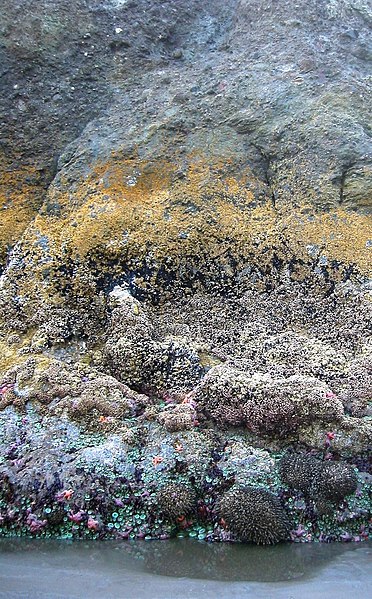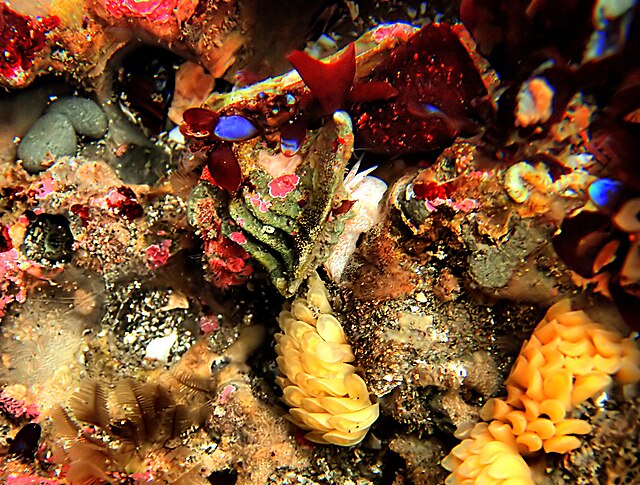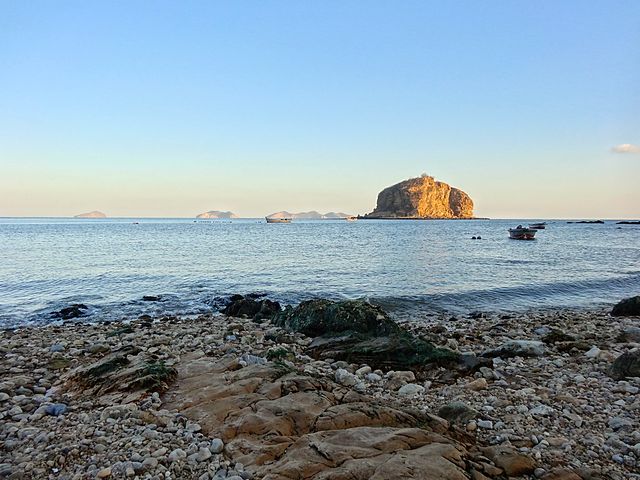The intertidal zone or foreshore is the area above water level at low tide and underwater at high tide: in other words, the part of the littoral zone within the tidal range. This area can include several types of habitats with various species of life, such as seastars, sea urchins, and many species of coral with regional differences in biodiversity. Sometimes it is referred to as the littoral zone or seashore, although those can be defined as a wider region.
Tide pools at Pillar Point showing zonation on the edge of the rock ledge
A rock, seen at low tide, exhibiting typical intertidal zonation, Kalaloch, Washington, western United States.
A California tide pool in the low tide zone
Nutrition (Eutrophic) Pollution in Assateague Island National Seashore, Maryland
Tides are the rise and fall of sea levels caused by the combined effects of the gravitational forces exerted by the Moon and are also caused by the Earth and Moon orbiting one another.
In Maine (U.S.), low tide occurs roughly at moonrise and high tide with a high Moon, corresponding to the simple gravity model of two tidal bulges; at most places however, the Moon and tides have a phase shift.
Low tide at Bangchuidao scenic area, Dalian, Liaoning Province, China
Low tide at Ocean Beach in San Francisco, California, U.S.
Low tide at Bar Harbor, Maine, U.S. (2014)








